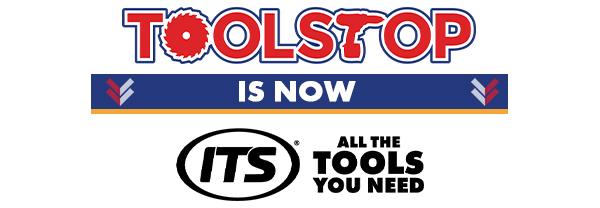Random Orbit Sanders
Discover versatile orbital sanders for smooth finishes on wood, metal, and more. With circular sanding pads, dust extraction systems, and a range of grit options, these tools are perfect for DIY enthusiasts and professionals tackling edgework and large surfaces alike.
Who Uses Orbital Sanders?
Orbital sanders are trusted by professionals and DIYers for their versatility and ease of use. From finishing furniture to preparing large surfaces for painting, these tools are indispensable for a variety of projects.
- Carpenters – Smooth and prep wood for staining, painting, or varnishing with precision and speed.
- Furniture Makers – Achieve flawless finishes on furniture pieces, sanding down edges and surfaces effortlessly.
- Home Renovators – Prep walls, ceilings, and floors with sanding disks that suit a variety of materials, ensuring a clean surface for paint or treatments.
- DIY Enthusiasts – Perfect for small repairs, crafting, and enhancing projects with a professional-grade finish.
Orbital Sanders Are Great for Jobs Such As:
- Smoothing furniture surfaces – Prepare tables, chairs, and cabinets for painting or staining.
- Refinishing floors – Sand down wood floors to remove scratches and imperfections before reapplying finishes.
- Removing paint – Strip old paint or varnish from flat surfaces effectively.
- Prepping edges – Sand intricate corners and edges that require detailed attention.
- Metal preparation – Polish and smooth metal surfaces for welding or painting projects.
How to Choose the Best Orbital Sander
Choosing the right orbital sander is essential to ensure your projects have a smooth, professional finish. From power options to dust extraction, understanding the key features can help you select the best tool for your needs. Here’s what to look for:
1. Power Options for Orbital Sanders
Corded Sanders: Ideal for extended sanding sessions, corded models provide consistent power without worrying about battery life, making them suitable for large projects.
Cordless Sanders: Great for portability and convenience, cordless orbital sanders are perfect for on-the-go tasks or hard-to-reach areas, though battery life can be a limitation.
2. Dust Extraction Systems
A quality dust extraction system ensures a clean workspace by capturing sanding debris efficiently. Look for models with built-in collection bags or compatibility with external vacuum systems for optimal dust management.
3. Variable Speed Control
Variable speed settings allow you to adjust the sanding intensity for different materials and tasks. Low speeds are ideal for fine sanding, while higher speeds work better for removing layers quickly.
4. Ergonomics and Weight
A lightweight, ergonomically designed sander reduces hand fatigue during long projects. Look for comfortable grips and balanced designs for greater control and ease of use.
5. Compatible Sanding Pads
Choose a sander that supports a variety of sanding pads, from coarse grits for rough material removal to fine grits for smooth finishes. Velcro-backed pads are convenient for quick changes.
Essential Accessories for Orbital Sanders
Pairing your orbital sander with the right accessories can significantly improve its performance and make your sanding tasks easier. From specialized sanding pads to dust extraction systems, these accessories are designed to enhance functionality and user experience.
1. Sanding Disks
Sanding disks are a must-have for orbital sanders. Available in various grit levels, from coarse for heavy material removal to fine for smooth finishing, they allow you to tailor your sander to any surface or task.
2. Dust Collection Bags
Dust collection bags or adapters help maintain a clean workspace by capturing debris as you sand. These accessories not only reduce cleanup time but also improve air quality during sanding tasks.
3. Backing Pads
Backing pads support your sanding disks and ensure even sanding pressure. Using high-quality backing pads can prolong the life of your sanding disks and improve the overall finish of your projects.
Frequently Asked Questions
What is an orbital sander best used for?
Orbital sanders are ideal for smoothing wood, removing old paint, and preparing surfaces for painting or finishing. Their circular motion makes them versatile for flat surfaces and edges.
What is the difference between orbital and random orbital sanders?
An orbital sander moves in a consistent circular motion, while a random orbital sander combines circular and elliptical motions for a smoother finish without swirl marks. Random orbital sanders are better for finer finishes.
How do I choose the right sanding disks for my orbital sander?
Choose sanding disks based on grit size. Coarser grits (e.g., 40-80) are for heavy material removal, while finer grits (e.g., 120-400) are for smooth finishes. Ensure the disk size matches your sander's specifications.
Can orbital sanders be used on metal or plastic?
Yes, orbital sanders can be used on metal and plastic with the appropriate sanding disks. Use finer grits to avoid scratches and achieve a polished finish. Always check the material compatibility of your disks.
Do orbital sanders require dust collection systems?
While not mandatory, using a dust collection system or adapter significantly reduces mess and improves air quality. Many orbital sanders come with built-in dust collection features or compatible attachments.
Other sanders such as belt sanders (for prepping woodwork for more delicate finishing sanders), detail sanders (for small and hard to reach areas) and sheet sanders (commonly known as finishing sanders or palm sander - ideal for edges and corners) are available.


